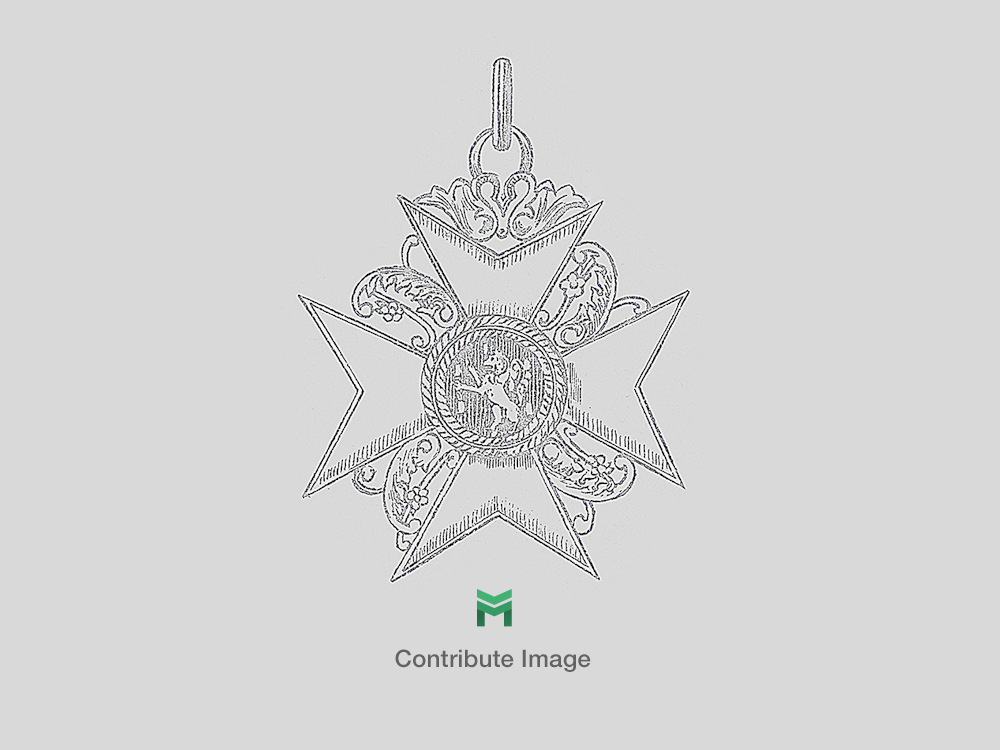Order of Merit for Arts and Sciences, III Class, Type III
SKU: 01.ANH.0102.303.01
Estimated market value:

Estimated market value:
Attributes
Physical Description
An ovular medal constructed of silver. The obverse bears a Gothic letter "F" on a smooth background, encompassed by a border of laurel. The reverse bears the split coat of arms of the house of Anhalt-Köthen, Anhalt-Dessau, and Anhalt-Bernburg, encompassed by a border with the inscription "Für Wissenschaft und Kunst" (For Science and Art). Topped with a crown. On a loop for suspension, on a green, white and red striped ribbon. Measuring 64mm x 38mm.
History
The Order of Merit for Arts and Sciences was established by Duke Friedrich I and was awarded in recognition of meritorious achievements in the fields of art and science at home and internationally. The order was first instituted in only one class, but in 1912 the order was expanded to include I Class, II Class, and III Class.
The original model of the Order of Merit for Arts and Sciences was an ovular bronze gilt medal with twenty-four pointed rays and topped with a crown. It was awarded from 1873 to 1905. The obverse centre is a Gothic script letter "F" for Friedrich I. It is encompassed by a border with the inscription "Herzog von Anhalt" (Duke of Anhalt). The reverse bears the inscription "Für Wissenschaft und Kunst" (For Science and Art) encompassed by an open ended laurel wreath tied at the bottom. It was originally worn on a green and red striped ribbon on the left breast.
In 1905, the Order of Merit for Arts and Sciences was redesigned. It was made larger and without rays; instead, a laurel wreath bordered the medallion. The lettering of the "F" on the obverse was changed to a Gothic letter and the reverse contained the split coat of arms of the house of Anhalt-Köthen, Anhalt-Dessau, and Anhalt-Bernburg, encompassed by a border with the inscription "Für Wissenschaft und Kunst" (For Science and Art). It was worn on a neck ribbon by men and a bow on the left breast by women. The II Type was awarded from 1905 to 1912.
The award was redesigned again in 1912 and was divided into three classes. The characteristics of the Type III award were the same as the Type II, but larger. The I Class was awarded on a neck ribbon or a bow. The ribbon was green with red stripes. The II Class was awarded on a green ribbon with white and red stripes. The III Class was awarded in silver and on a ribbon on the left breast. The Type III award was presented from 1912 to 1918.

Versions
$2,000 USD
Silver
Obv: F Rev: FÜR WISSENSCHAFT UND KUNST
34x58mm; 21x18mm (crown)
This version is constructed of silver.


Comments
Sign in to comment and reply.


Scroll Top